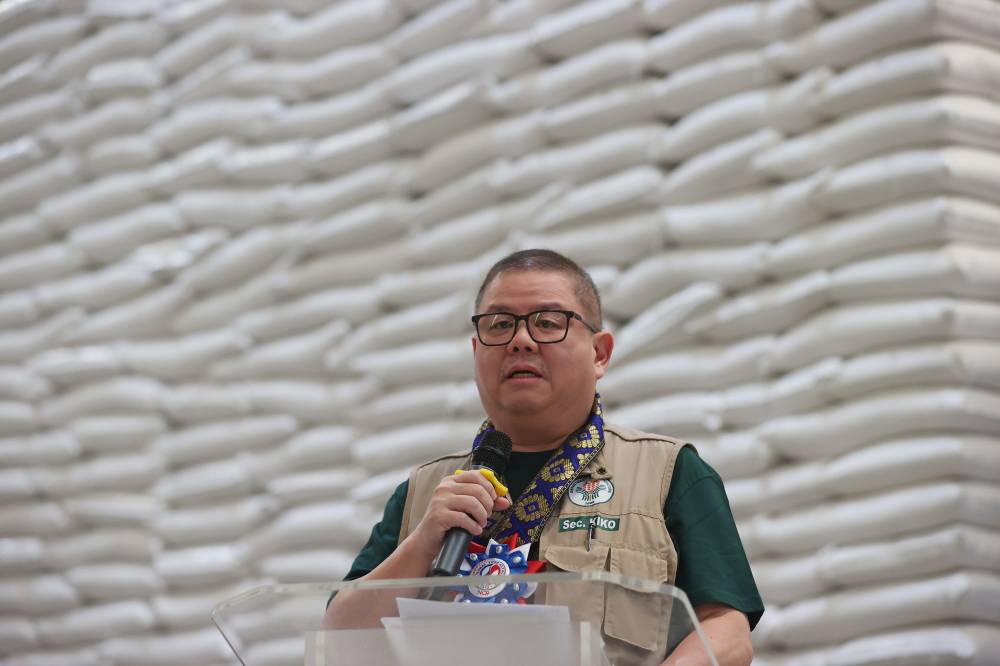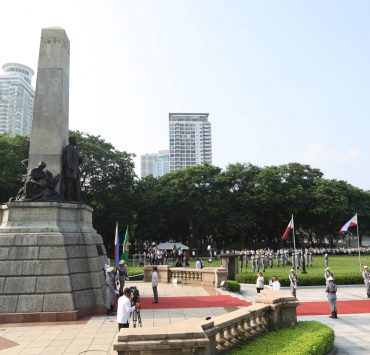DA starts releasing NFA rice to dampen prices

The Department of Agriculture (DA) started releasing National Food Authority (NFA) rice stocks to local governments on Wednesday, two weeks after declaring a food security emergency to temper rising retail prices.
The DA declared a food security emergency on rice on Feb. 4 to address the “extraordinary” increase in retail prices and ensure the availability of affordable rice for the duration of the emergency declaration, although it previously clarified that there is no shortage of rice.
These stocks will be distributed to local governments through Food Terminal Inc. (FTI) and sold to the public at P35 per kilogram.
During a ceremonial turnover held at the NFA’s warehouse in Valenzuela City, Agriculture Secretary Francisco Tiu Laurel Jr. said the distribution is a “race” as the grains agency needs to unload its stocks “as fast as possible” in time for the harvest season.
With most NFA warehouses filled to the brim, Tiu Laurel expressed hope the grains agency’s rice stocks will be disbursed at the soonest possible time to free up space for fresh harvests, allowing local farmers to take advantage of the NFA’s buying price of P23 to P30 per kg.
“Whatever the LGU asks, whoever comes first, then we will release. Then, we will stop at 150,000 [metric] tons,” he said.
“But then, the most likely thing that will happen is if the stock of warehouses is reduced … we are buying palay now, most likely we will continue until 300,000 MT runs out,” he added.
According to the NFA, 67 local government units (LGUs) have signified their interest in distributing NFA rice under the emergency declaration.
For this purpose, the agency allotted 625,000 bags of NFA rice to LGUs across the country, according to the DA’s Department Circular No. 4 outlining the guidelines for releasing the NFA rice during the food security emergency.
Regions covered by this declaration are the National Capital Region, Caraga, Calabarzon, Bicol, Western Visayas, Central Visayas, Eastern Visayas, Zamboanga Peninsula, Northern Mindanao, Davao, Soccsksargen and Bangsamoro Autonomous Region in Muslim Mindanao.
Interested LGUs need to enter into a memorandum of agreement with FTI and provide a purchase order for the quantity and specifications of rice it requires. They also need to send a written request to FTI for withdrawing NFA stocks.
San Juan City Mayor Francis Zamora said they hope to sell initially 5,000 sacks of NFA rice to their constituents as early as next week, adding he is given a go signal from the city council to initiate the procurement process.
“My plan is to have a preregistration process because we don’t want thousands of people suddenly lining up outside the city hall to buy rice,” said Zamora, concurrently serving as Metro Manila Council president and Regional Peace and Order Council chair.
Boon to farmers
For his part, Camarines Sur Rep. Luis Raymund Villafuerte said this initiative is of great help to both farmers and consumers in the province. Camarines Sur’s allocation is 25,000 sacks.
“Although [Camarines Sur] is a top six rice producer, the farmers are also consumers. This is a good program to stabilize prices and protect the consumers,” Villafuerte said.
The National Price Coordinating Council, which includes the DA, recommended this emergency declaration, which is allowed by the amended Rice Tariffication Law to address supply shortages or extraordinary increases in prices.
“The surge in rice prices was triggered by India’s ban on the export of non-basmati rice in August 2023 and heightened global demand due to concerns about low harvests from El Niño in early 2024,” the DA said in a statement on Wednesday.
According to the DA, imported rice prices have not returned to pre-July 2023 levels even if President Marcos slashed rice tariffs to 15 percent in July and global rice prices declined after India lifted its export ban.
















